Children's fins for the pool: description, types, choice
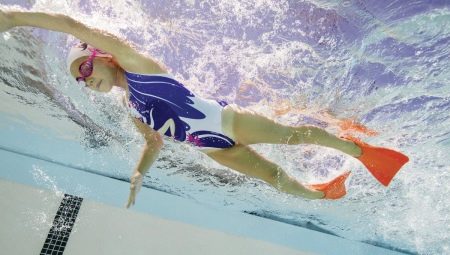
Swimming in the pool for a child can be not only an exciting pastime, but also a useful sport, for which you need some equipment. Fins are a necessary attribute when swimming, as they help to develop many indicators, strengthen the strength of the legs, and increase the flexibility of the joints.
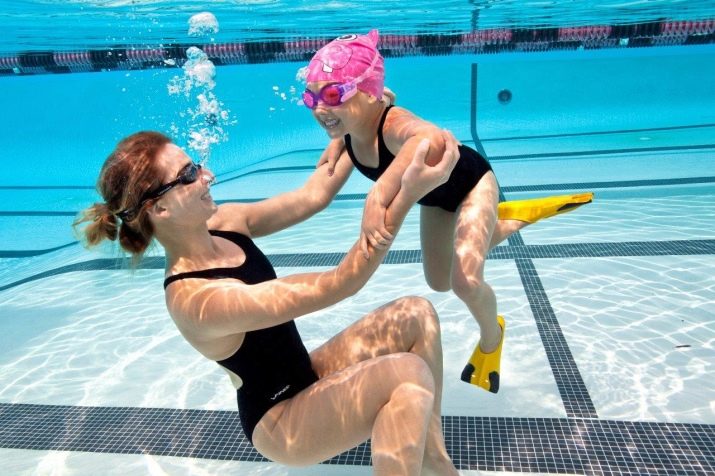
Peculiarities
Fins are a necessary device for swimming that you put on your feet. Used individually or complete with scuba gear and mask. They can reach a length of 55-65 cm. With their help, the child learns to swim much faster. Short fins are considered the most suitable option for beginner swimmers. In them, the child will easily perform maneuverable movements in the pool, turns, somersaults and much more.
Due to their small size, they practically do not weigh down the legs and are not felt at all. They create resistance that is essential for good performance in the pool, increasing the foot area, the movement becomes powerful. The type of short fins used favorably affects the development of swimming styles such as crawl, breaststroke or butterfly.
They are made from ecological materials that are highly durable.
At the same time, they are quite soft, they spare the joints from the load during swimming.


Adjustment of the open heel is possible, which allows you to stay in them for a long time. Thanks to them, the child swims more confidently, increases speed and stabilizes his position in the pool. The technique of hitting the legs in the water is trained, endurance is increased, and strong flexion of the knee joint is prevented when swimming.In some models, graphite fiber is added, due to which the quality of the fins increases, and with it the functionality. They are usually black or gray.

Varieties
Short or shortened fins are very versatile.
For example, training - can be with a closed heel. They hold perfectly on the leg, do not cause inconvenience. But when choosing this option, you must choose the appropriate size or one size larger.
The next type of short models are fins, in which the open heel is regulated. They are attached to the leg thanks to a belt or a pressure spring. Wearing them on a bare leg is rather uncomfortable and undesirable, as they can rub. To avoid this, swimming slippers or special boots are usually purchased in the kit.
For children, all models of swimming accessories have a variety of colors, which may contain both bright colors and compositions with abstraction or characters from your favorite cartoons. Rubber and dense polyurethane are considered the most popular materials for making fins. But there are models made of silicone.
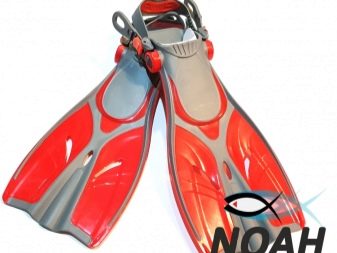
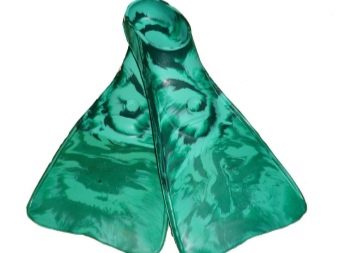
And also fins can be with open and closed toe. The open type is quite convenient, because water passes through it better, and there is a small margin of size for the child's growing leg.
There are models that provide "Power system"... It increases swimming speed by 15-20% due to the fact that the materials bend under the action of force and return to their original position much more intensively.
If a longitudinal, corrugated insert is located in the middle of the blade, then a "tunnel effect" occurs, which increases speed and saves forces. When paddling, the paddle bends under water, keeping the original amount of water. This increases the speed of the water by 50%.
If the blade of the overshoes has its beginning at the top, then such a structure conserves energy consumption during exercise.

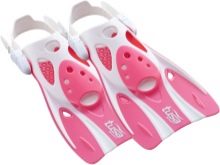

How to choose?
When choosing fins for a child, first of all, the length, width and rigidity of the material are taken into account. They should not squeeze the growing swimmer's leg or dangle too much. A fitted pocket supports the arch of the foot and runs from the base of the ankle to the foot. When buying, make sure that the straps fit over the heels correctly.The material of manufacture is also of great importance. For children's models, they always use high quality materials that are absolutely safe for health. Rubber and silicone are distinguished by their ductility.
Silicone does not absorb odors and does not cause allergies. They are softer and more elastic than rubber, but they are more expensive. Resistant to the negative effects of the sun and chlorinated water.
If you choose a rubber version, then it will allow the child to perform various movements and freely stay on the surface of the water.

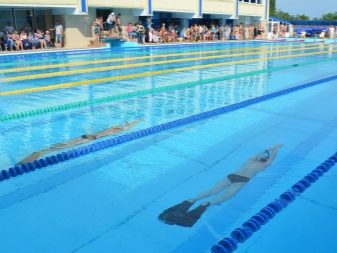
Distinguish between models closed and open heel... The second option is considered the most comfortable, as the heel is well fixed. This makes the movements more agile and safer. The leg joints are not stressed.
If the child's leg is growing rapidly, there is the option of purchasing open-heel fins. They allow you to change the size of the galoshes.
Short fins train leg muscles and allow you to move comfortably both in water and on land. The reliability of this design is much higher.
The color of the fins indicates their rigidity. So, black color denotes the highest elasticity, gray - medium hardness, and multi-colored ones have maximum flexibility.
When choosing fins them it is imperative to try on and stay in them for ten minutes, in order to assess how the leg feels in them, whether there is squeezing or discomfort.
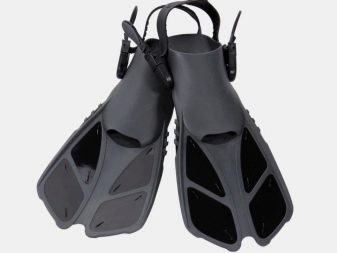
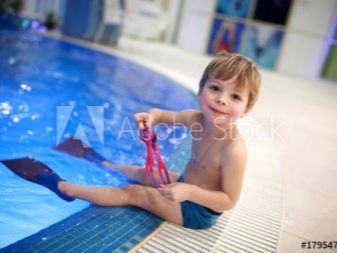
To put on correctly, you need to moisten them with water. If you have an open heel, you need to relax its strap as much as possible, and then finally fix it on the leg. Such models are put on consistently.First, the toe is pushed forward, and the heel is pulled back and fixed on the heel.
The disadvantage of such fins is that the foot freezes quickly, which can provoke seizures.
When choosing the right model, pay attention to the sole. An excessively smooth surface can cause inadvertent injury, so grooved fins are the most suitable option.
More experienced children who are already attending competitions and are considered professionals in their field can choose models made of thermoplastic or composite materials. They are lightweight and dynamic. Easy maneuvering comes at the expense of increased rigidity. The ribs located on the surface of the fins act as vertical stabilizers. They are equipped with channels that channel water and reduce water resistance.
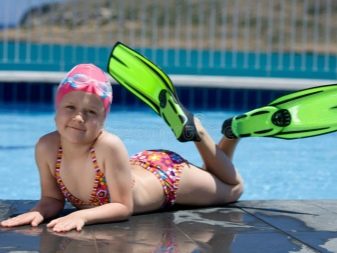
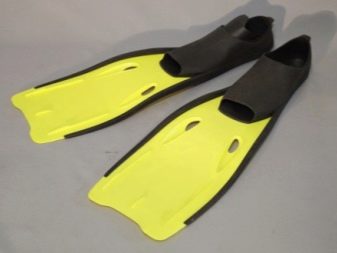
Care
Fins are easy to take care of. Before use, it is necessary to check the serviceability, after training, rinse with running water and dry. Cleaning agents help with strong plaque.
Walking on land with fins is strongly discouraged, because of this they are deformed.
During storage avoid placing foreign objects on them. They should not bend and lose shape. Ideal for hanging with all straps unbuckled. Do not store near heat sources or in an extremely warm room. They can dry out from excess heat.
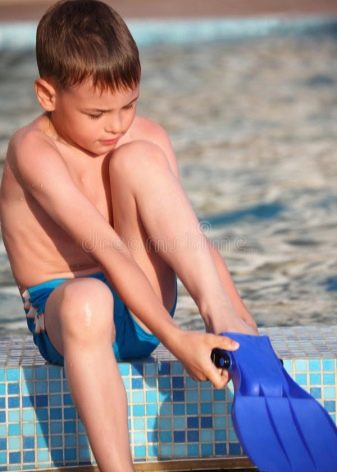
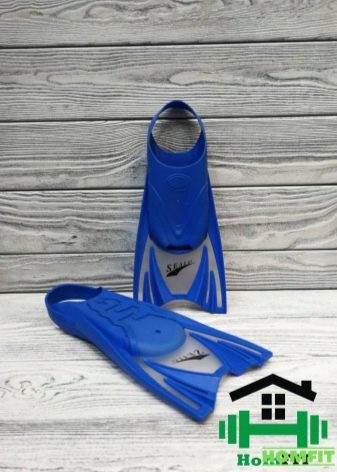
See below for how to choose training fins.








